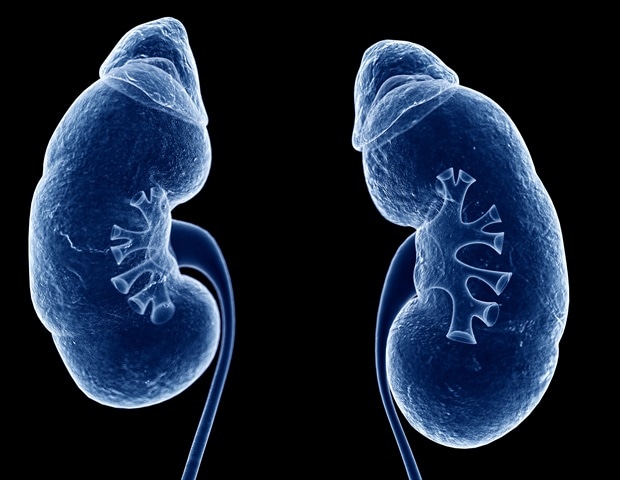Multiple sleep disorders may complicate pregnancy, including insomnia, obstructive sleep apnea (OSA), and restless legs syndrome (RLS). A recent review in Frontiers in Medicine summarizes what is known about these conditions and suggests future research directions and opportunities.

Introduction
Sleep is important for homeostasis, with inadequate sleep being linked to several adverse health outcomes. These include worsening cardiovascular health and brain function, mental ill-health, poor overall health, and obesity.
Recently it was shown that extending sleep duration for just two weeks was associated with reduced caloric intake among overweight individuals.
Sleep disorders in pregnancy may be predisposed to by the widespread alterations in maternal physiology and sleep processes, mediated by hormonal shifts, including estrogen, progesterone, oxytocin, prolactin, cortisol and melatonin.
Almost one in two pregnant women report sleeping less than usual. The increasing bulk of the uterus causes frequent micturition due to bladder pressure, leading to frequent awakenings. This is exacerbated by fetal movements and the difficulty in finding a comfortable position from mid-pregnancy onwards.
In short, “pregnancy and sleep intersect to influence the cardiovascular, gastrointestinal, hematologic, metabolic, musculoskeletal, and respiratory systems of pregnant individuals.”
Identified risk factors for sleep disorders in pregnancy include lower education, higher BMI, older mothers, advanced pregnancy, and lower socioeconomic status.
Research shows that the prevalence of insomnia rose from one in four in early pregnancy to over 40% by the third trimester, while RLS and sleep-disordered breathing (SDB) contributed to sleep disorders in pregnancy.
Circadian sleep disturbances, including narcolepsy or those related to shift work or jetlag or simply voluntary disruption of one’s sleep routine, were also found to play a role during this period.
Poor sleep in pregnancy is linked to adverse fetomaternal outcomes and even to chronic health issues in the offspring, affecting the body mass index (BMI) and blood pressure.
The largest study in this area so far linked poor sleep during pregnancy to several complications, including hypertensive disorders of pregnancy (HDP), gestational diabetes mellitus (GDM), cesarean section (CS), large-for-gestational-age (LGA) babies, preterm birth (PTB) and stillbirth.
The current study aimed to review all existing literature on this topic and to provide a platform for further research on how circadian disturbances affect reproduction and early pregnancy. The researchers included ~740 studies in their summary.
Types
SDB
Among the various type of sleep disturbances, SDB was shown to hold a prominent place. Pregnancy-induced alterations in respiratory and sleep physiology contribute to this and the rate of clinical diagnosis is much lower than its actual prevalence.
The most well-known is obstructive sleep apnea (OSA).
Reports based on subjective measurements estimate snoring by 3-64% of pregnant women during the third trimester, depending on the definition used. In one study, 90% of pregnant obese women were at a high OSA risk in the first trimester, vs <9% in non-obese pregnancies.
Moderate to severe snoring was reported in ~21% of third-trimester pregnancies where mothers were overweight or obese, but less than a fourth of this in women with normal BMI. Habitual snoring was present in the third trimester in over 60% of women with HDP, vs <20% without HDP.
Finally, any chronic disease was associated with a high risk of OSA in 45% of pregnant women vs 10% of healthy pregnancies.
Objectively measured, OSA appeared to affect about a fifth of pregnancies worldwide, mostly in the New World. Its prevalence in the third trimester rose to 25-37% compared to 4-11% during the first.
While 15-43% of obese women had OSA by objective standards, it was mostly mild up to the early third trimester, with 14-19% being severe. In late pregnancy, the prevalence was 38-67%.
GDM is also a risk factor for OSA, which is present in 17-66% of late second-trimester pregnancies, depending on the definition. However, moderate to severe OSA is present in only 18% of pregnancies complicated by GDM.
With severe HDP, the prevalence of severe OSA was 35%, more than twice that of non-HDP pregnancies.
The researchers also reported pregnancy-specific SDB, compared to chronic SDB persisting in pregnancy. New-onset SDB complicates one in five pregnancies, though in most cases it is mild. With increasing pregnancy duration, SDB becomes increasingly symptomatic and more severe in at least a tenth of cases.
After delivery, as the levels of progesterone fall, SDB reaches its peak, with the apnea-hypopnea index being higher than at 36 weeks. The index improves by three months after childbirth.
Upper airway narrowing in all positions during pregnancy contributes to SDB, with lower mean and minimal arterial pressure when sleeping supine in later pregnancy, irrespective of apnea or hypopnea.
Risk factors include unmodifiable factors like elderly age at the time of pregnancy and poorly modifiable factors such as gestational weight gain (GWG). Pre-existing obesity is a clear risk factor for OSA during pregnancy. In GDM pregnancies, a higher third-trimester BMI and a greater GWG predict more severe OSA at all levels of blood glucose.
Maternal outcomes
In HDP, self-reported snoring is associated with double the risk of OSA, along with larger neck sizes and maternal age. Asthma, diabetes, and chronic hypertension are other risk factors for OSA.
With SDB during pregnancy, the risk of adverse fetal and maternal outcomes, both acute and postpartum, is higher. These may be partly due to confounding factors like obesity and GDM, which also contribute to SDB severity, as well as vice versa.
Airway obstruction during pregnancy is associated with resulting alterations in hemodynamic performance, which could adversely impact women with HDP.
OSA in mid-pregnancy increases the risk of gestational hypertension (GH) by 73% and GDM by 3.5 times, though the latter is not borne out by other studies.
The risk of CS, assisted vaginal delivery, postoperative wound complications, pulmonary embolism, congestive heart failure, and cardiomyopathy, and the need for intensive care unit (ICU) admission were all increased.
Indeed, while the risk for CS was raised by 38% for elective procedures, that of cardiomyopathy and pulmonary edema were raised by 9 and 6 times, respectively.
Fetal outcomes
Fetal growth tends to be adversely affected by OSA in pregnancy, though fewer cross the limit of small-for-gestational-age (SGA) or fetal growth restriction (FGR). Low Apgar scores and a higher risk of requiring neonatal resuscitation were associated with OSA in pregnancy.
RLS
RLS is thought to be associated with the hormonal changes of pregnancy and is transient. It becomes most severe in late pregnancy and usually disappears after delivery. It is difficult to estimate the prevalence due to the use of different definitions as well as geographic variations, but it may affect about a fifth of all pregnancies.
Risk factors for RLS include older maternal age, first pregnancy, low socioeconomic status, and obesity. In addition, iron deficiency anemia, genetic factors, and history of RLS in the individual or family.
Adverse outcomes associated with this disorder include other sleep disorders and mental disorders, underlining the importance of good sleep for mental health. The risk of HDP, CS, threatened abortion, FGR and increased birthweight have been associated with RLS in pregnancy.
Insomnia
Insomnia either worsens or sets in during pregnancy for those affected during pregnancy. Multiple contributors have been identified, including hormonal, psychosocial, and physical changes. About 25% of first-trimester pregnancies may be complicated by insomnia, but the risk is doubled in the third trimester.
Pregnant women are at higher risk for this condition, and it becomes more common as pregnancy advances. Insomnia is more likely in women with pre-existing mental illness, especially anxiety or depression, the latter being associated with a two-fold higher risk. A history of insomnia, the presence of obesity, and HDP are all risk factors.
Physical activity in moderation appears to be protective in the third trimester, while smoking and late-night eating increases the risk.
Fetal outcomes have not been measured with either RLS or insomnia. Other factors, such as catastrophizing insomnia, certain types of personality, and sleep reactivity, have not been studied with respect to the odds of persistent insomnia following childbirth.
Maternal outcomes like obesity, type 2 diabetes, depression, post-partum anxiety, and cardiovascular disease have been linked to poor sleep. In pregnancy, inadequate sleep is associated with increased odds of GDM and stillbirth, as well as low birth weight and PTB. Other potential causes/outcomes of sleep aberrations that await investigation include menstrual abnormalities, infertility, and subfertility.
Circadian disturbances
Circadian rhythm disruptions are associated with worse health outcomes. Delayed sleep timing in women at risk for depression was linked to a higher risk of mania and obsessive-compulsive disorder, as well as post-partum depression. GDM is another potentially associated outcome.
Shift work is associated with some degree of abnormality in the neurodevelopment of the offspring in one large retrospective study. The risk of HDP was doubled in those who worked 36 hours or more a week with night shifts. This cohort also had a higher risk for SGA babies.
What are the implications?
Sleep disruptions are common during pregnancy, but most studies look only at sleep duration. In the future, researchers should explore sleep quality as well, as well as sleep timing and whether there are sleep disorders.
Moreover, standardized objective measures need to be adopted along with self-reported assessments. Recent studies show that certain self-assessed measures correlate with BMI, for instance, rather than sleep disorders as such.
Confounding factors must also be identified since these could independently affect sleep hygiene during pregnancy. These could include partner routines, partner snoring, obesity, mental ill-health, and partner infertility, for instance.
Only with such broadened and detailed investigations is it possible to “begin unraveling the complexity of sleep’s impact, quantifying its relationship with reproductive outcomes, and ultimately enhancing the health of women, their infants, and future generations.”

 PARENTING TIPS
PARENTING TIPS







 PREGNANCY
PREGNANCY








 BABY CARE
BABY CARE








 TODDLERS
TODDLERS








 TEENS
TEENS








 HEALTH CARE
HEALTH CARE







 ACTIVITIES & CRAFTS
ACTIVITIES & CRAFTS








 CONTACT
CONTACT ABOUT
ABOUT

















